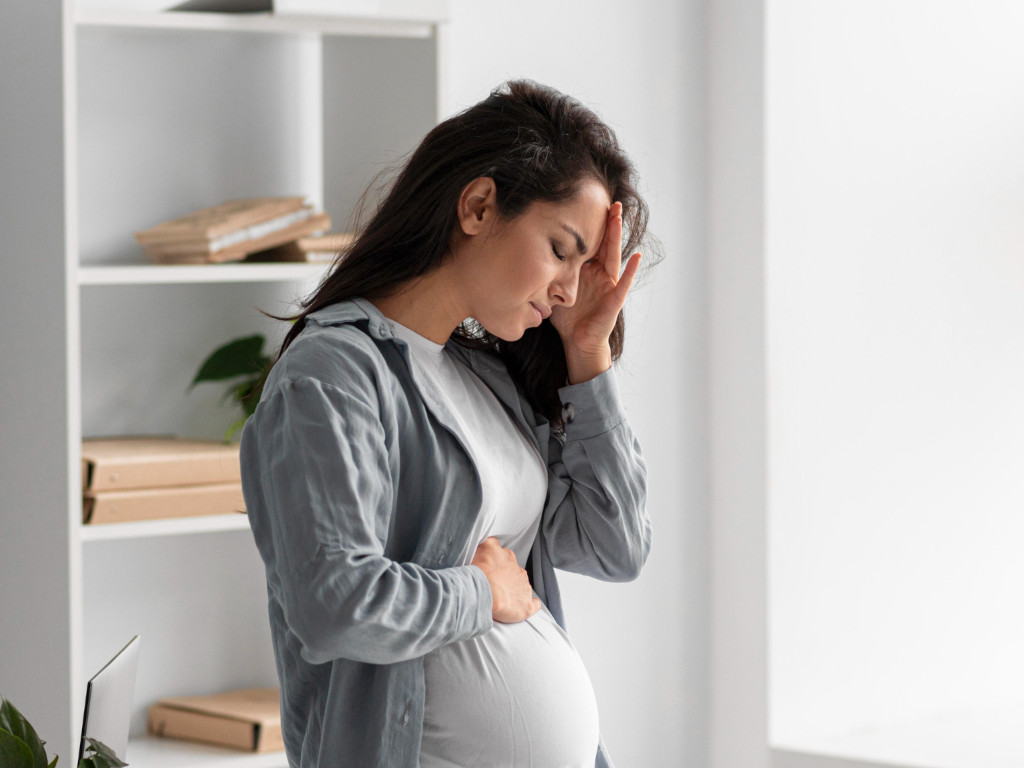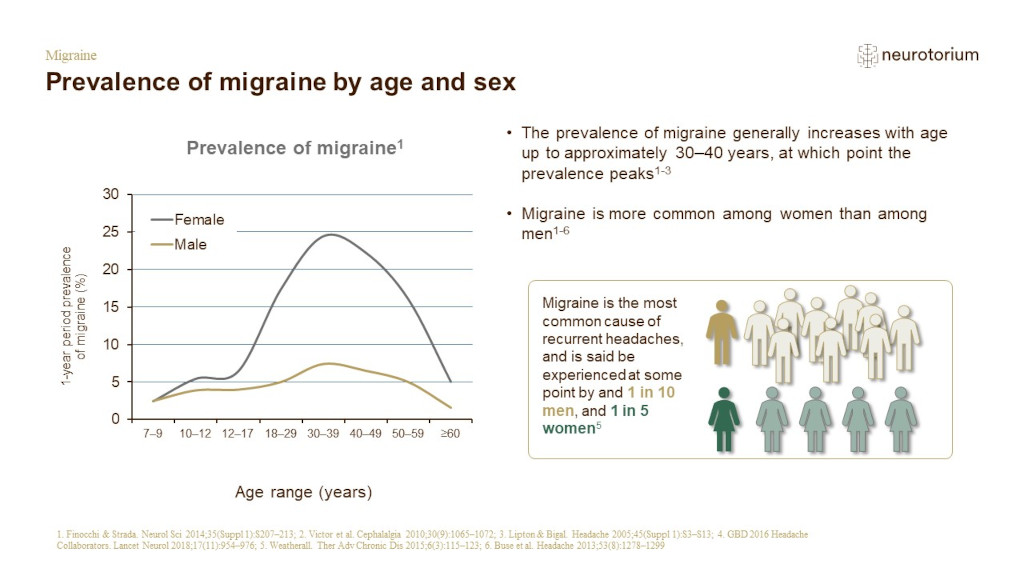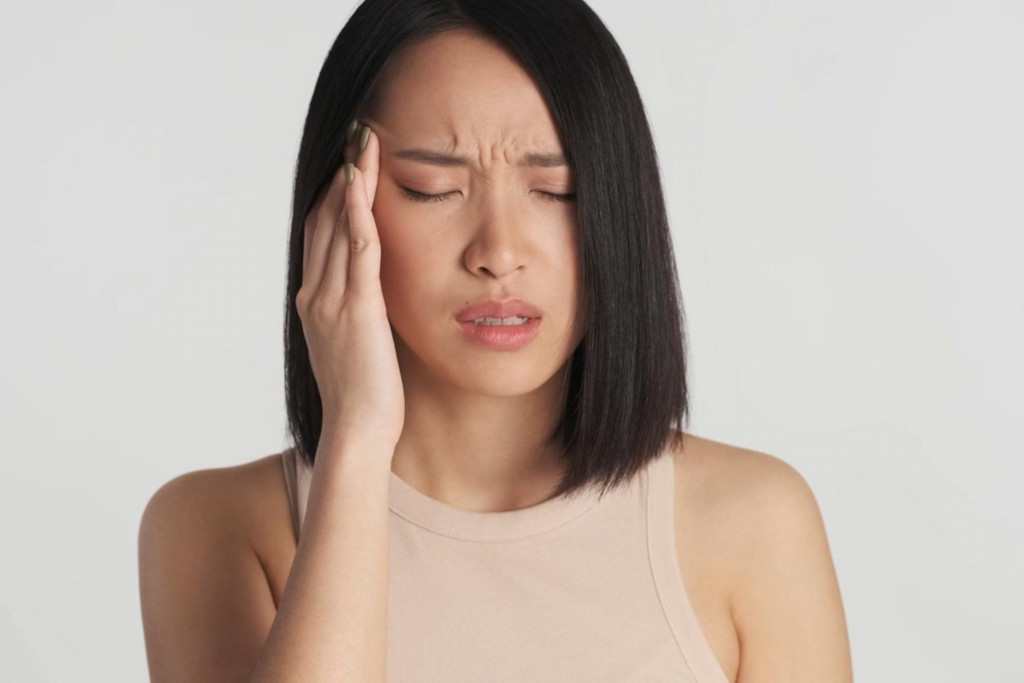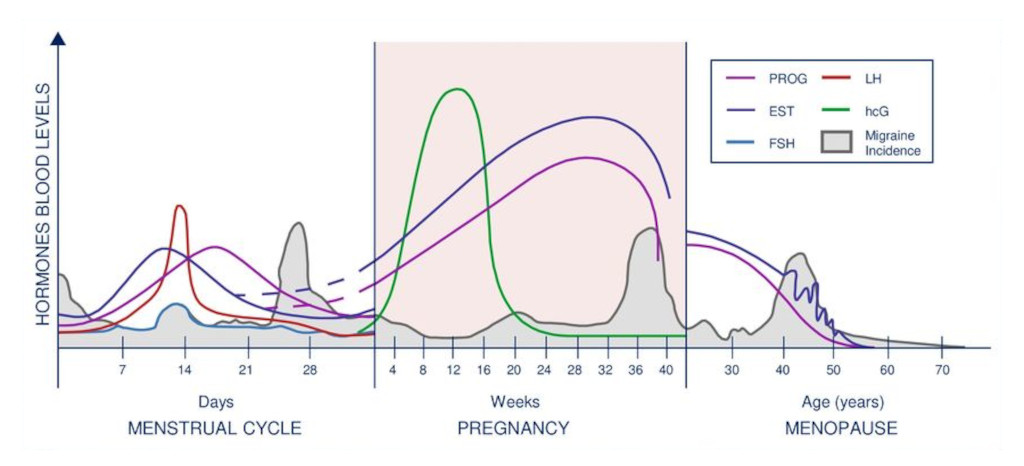SingaporeMotherhood | Parenting
May 2024
Migraines Q&A: Why It’s (Mostly) a Women’s Curse

Yes, men do get them too. But did you know that women are twice as likely as men to suffer from migraines? Furthermore, we experience them more frequently, for longer durations, and with increased disability during attacks. To make it worse, symptoms typically peak during our most productive years, when we are in the thick of building careers and families.
27-year-old physiotherapist and brand-new mum, Faye Chan, feels this keenly. She shares, “I’ve not had migraines since I gave birth, thankfully. But given that stress is a major trigger for me, I won’t be surprised if they return soon. Besides my hormone levels changing postpartum, I also have to adapt to this new lifestyle of balancing baby and work.”

Clinical neurologist Dr Zhao Yi Jing of Zhao Neurology & Headache Clinic explains that women are more susceptible due to the significant impact of oestrogen, the female hormone. Dr Zhao, who specialises in treating migraine and other neurological disorders in females, answers 15 questions about migraine and how we can better manage the condition.
1. What are migraines?
Migraine is a subtype of primary headache. Primary headaches are headaches that are not associated with any other underlying medical condition. They are a disorder of the brain itself, thus making some individuals more susceptible to experiencing headaches. In contrast, secondary headaches may be a symptom of an underlying medical condition or injury.
2. How bad can a migraine get?
A migraine is not just a normal headache. Its severity can significantly impair your ability to function at work or school. The condition often takes a toll on your quality of life, because it affects family, work, and social life. This effect can further negatively impact your mental health and general wellbeing in the long run. Therefore, it is crucial to seek medical assistance promptly.
I first started getting these horrible headaches about once a month when I was 18 years old. It got so bad one day that I fainted and was sent to the A&E. After further investigation, the neurologist diagnosed me with migraine.
– Faye Chan
(See also: 6 MOST COMMON REASONS WHY CHILDREN IN SINGAPORE END UP IN THE A&E)
3. How do I know when it’s a migraine and not just a normal headache?
Migraines are generally more intense than other primary headaches like tension-type headaches. Sufferers describe a throbbing or pulsating pain that usually occurs on one side of the head. The pain typically worsens with movement and to top it off, other symptoms may come along. These include vomiting, blurred vision, sensitivity to light and sound, as well as neck stiffness.
4. I didn’t have migraines when I was younger. What brought them on?

Approximately 10 per cent of the general population are prone to experiencing migraines. However, this does not necessarily mean that they will have frequent migraine attacks. Various factors, such as stress and lack of sleep, can trigger migraines. Therefore, new onset migraine attacks can occur at any stage of a person’s life, particularly due to poor lifestyle management.
Stress and hormones are my major triggers — they began during a very hectic period of my school life and coincide with my monthly period. I am also sensitive to sounds and lights. Not having my cup of coffee in the morning may also trigger a migraine.
– Faye Chan
5. What are some common triggers?
Migraine triggers can be categorised into various categories. While it varies from person to person, here are some common examples:
Behavioural factors
- sleep deprivation or erratic sleeping times
- stress
- irregular meal times or skipping meals
- dehydration
- over-strenuous physical activity
- excessive screen time
- menstruation
Sensory factors
- exposure to bright or flashing lights
- abrupt weather changes
- strong odours
- loud noises
Dietary factors
- caffeine
- highly processed foods
- chocolates
- alcohol
- cheese
(See also: A MUM’S GUIDE TO SUCCESSFUL BABY-LED WEANING (BLW))
6. Why do migraine attacks always happen when I’m nearing my period?

Migraine is closely associated with the menstrual cycle. In fact, if you suffer from migraines between two days before the start of your period and two days after, in at least two out of three menstrual cycles, the clinical diagnosis is menstrual-related migraine. Fluctuating oestrogen levels during the menstrual cycle, pregnancy, and perimenopausal years also contribute to the frequency of attacks.
7. Are there warning signs for an impending attack and can I do anything to ward it off?
Before a migraine attack, some patients may experience premonitory symptoms. Fatigue, lethargy, loss of appetite, irritability, and heightened sensitivity, for example. If you feel a migraine attack coming on, try to identify and remove the underlying trigger. Then get adequate rest to facilitate recovery, and help prevent the onset of a full-blown attack.
The length of each attack can vary from a few hours to a few days. During more serious attacks, I have to stay in a dark, cold room for those few days. It’s challenging as I can’t go to school or work, and often take MCs. Sometimes, even after the worst of the attack passes, I still feel lingering effects for days after.
– Faye Chan
8. Is there any point to seeing a doctor when I’m having a migraine? They’ll just send me home with painkillers, right?
It is advisable to consult a doctor during a migraine attack. Prompt access to effective painkillers can help prevent the attack from escalating, because off-the-counter Panadol won’t do much. If you begin to experience more frequent migraine episodes, it may be beneficial to consult a neurologist. Such medical specialists are able to thoroughly evaluate the underlying causes and triggers of such recurrent attacks.
(See also: SHE SUFFERED A STROKE WHILE PREGNANT AT SEVEN MONTHS)
9. What treatment options are available?
Thanks to recent advancements in the treatment of migraines and headaches, we have access to a variety of effective options. These range from acute pain relievers to long-term preventive therapies. These significantly improve the quality of life for many patients by providing effective migraine management with minimal side effects.

One noteworthy example is the innovative class of Calcitonin gene-related peptide (CGRP) inhibitors, which target a protein associated with migraine attacks. By interrupting the CGRP pathway, these medications demonstrate promise in reducing both the frequency and intensity of migraines over time.
10. How can I better manage the pain and speed up recovery?
There are various lifestyle and behavioural modifications that you can implement to manage the pain and quicken recovery. Try incorporating these SMART techniques:
- Sleep – Ensure adequate sleep of 8 to 10 hours
- Meals – Maintain regular meals without skipping and stay hydrated
- Activity – Engage in 30 to 60 minutes of physical activity daily
- Relaxation – Practise relaxation techniques like mindfulness and behavioural therapy to reduce stress
- Triggers – Identify, understand, and avoid migraine triggers to prevent future episodes
By adhering to these practices, individuals can effectively cope with migraines and promote faster healing. Also try to take pain medications early to effectively control the migraine attack.
I’ve made it a habit to carry my painkillers with me wherever I go. Whenever I feel the beginnings of a migraine or when I know my period is coming, I will take some preventive measures and pop my medication to ensure that it doesn’t develop into a full-blown migraine attack.
– Faye Chan
11. How do I communicate with my children/family during an episode?
If you suffer from migraines, it’s important to educate your family members about the disorder. Explain to your spouse and other adult family members about the severity and debilitating nature of a migraine attack, and enlist their help to take on household responsibilities when you can’t. Then teach your children that when mummy has a migraine, they have to be quiet and let mummy rest. Open communication is key.
12. What if I suffer a migraine attack while I’m at work?
Similarly, raising awareness about migraines at the workplace is crucial. This will enable coworkers and employers to better understand and provide assistance when needed. Hiding your condition and struggling in silence will only lead to poor work performance. Conversely, taking time off to see a doctor and resting at home is a more productive way of handling it.
(See also: DO YOU KNOW YOUR MATERNITY LEAVE AND PATERNITY LEAVE ENTITLEMENTS?)
13. As a migraine sufferer, should I be concerned if I’m pregnant or trying to conceive?
There is no reason to worry about the condition affecting your pregnancy or conception journey. However, it is important to inform your ob-gyn, who can advise you regarding medications if you’re pregnant. They can also refer you to a neurologist should the headaches worsen.
Surprisingly, I only experienced one migraine attack while pregnant. From what I understand, our female hormones stabilise during pregnancy, which reduces the likelihood of migraine attacks. It was also relatively mild and I was able to manage it pretty quickly.
– Faye Chan
14. If I have migraines, does that mean my children are more likely to get them in future?

Migraines often run in the family, with studies estimating up to 64 per cent of migraine risk is inherited. This does not necessarily mean that your children will definitely develop migraines in the future. However, the likelihood is slightly higher. That being said, the condition is preventable and if effectively managed, does not significantly impact everyday life.
15. Can children get migraines too?
Unfortunately, children can indeed experience migraines. Adolescent girls are more susceptible than boys, especially after menarche — the first menstrual period. Yes, we blame those pesky female hormones again. If a child experiences a new onset of headaches, do bring them to see a doctor for proper evaluation.
(See also: MIGRAINE IN KIDS – WHEN THAT HEADACHE IS MORE THAN JUST AN ACHE)
Find out more about migraines and how to manage it at migrainefree.sg. There’s also a simple quiz that can help you understand your migraine severity and serve as a starting point when you consult a doctor.
I am very lucky to have a supportive network around me, making the first month adjusting to motherhood much easier. This applies to migraine management as well. Because migraine is an invisible condition, it is very easy for non-migraine sufferers to assume that the pain is “not that bad” or “just a headache”. Being open about the condition both at home and at work also work well for me.
I am under no illusions that motherhood will be easy, especially once I return to work, so I’m very thankful for the support that I have as I navigate this journey. Remember that being a mother is a journey of learning, and similar to migraines, we need to be kind to ourselves and give ourselves the time to learn and to cope with it. We got this!
– Faye Chan
Featured image: freepik
All content from this article, including images, cannot be reproduced without credits or written permission from SingaporeMotherhood.
Follow us on Facebook, Instagram, and Telegram for the latest article and promotion updates.





